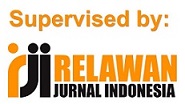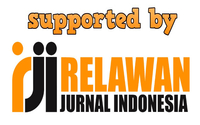PRESERVING CULTURAL HERITAGE THROUGH CUISINE: SYMBOLIC MEANINGS OF NASI HADAP-HADAPAN IN MALAY WEDDINGS IN TANJUNG BALAI
Abstract
Full Text:
PDFReferences
Abdullah, A. H., & Abdillah, N. (2021). Heritage value of the malayness socio-cultural symbols in millennium artist series of arts: A research analysis in semiotics. International Journal of Innovation, Creativity and Change, 15(3), 221–234. Retrieved from https://pdfs.semanticscholar.org/b73e/bb2c59d2aabc0e8a2f67d45faec1b1fa5403.pdf
Amalia, N. (2020). Food heritage and identity: Preserving Indonesian culinary tradition. Journal of Ethnic Foods, 7(1), 12–19. https://doi.org/10.1186/s42779-020-00046-0
Barthes, R. (1977). Image, music, text (S. Heath, Trans.). New York: Hill and Wang.
Braun, V., & Clarke, V. (2006). Using thematic analysis in psychology. Qualitative Research in Psychology, 3(2), 77–101. https://doi.org/10.1191/1478088706qp063oa
Counihan, C., & Van Esterik, P. (Eds.). (2013). Food and culture: A reader (3rd ed.). New York: Routledge.
Creswell, J. W. (2014). Research design: Qualitative, quantitative, and mixed methods approaches (4th ed.). Thousand Oaks, CA: Sage.
Fong, B., & Chang, P. K. (2024). The paradigm shift in Malaysian commensality: Symbolic interactionism in Mukbang videos. Journal of Ethnic and Diversity Studies, 2(1), 41–55. Retrieved from https://joeds.com.my/index.php/home/article/view/41
Geertz, C. (1973). The interpretation of cultures. New York: Basic Books.
Harun, M. F., Abd Rahman, K. E., & Mahsan, I. P. (2025). Metaphor beyond branding: From the perspective of cultural semiotics. Journal of International Business, Economics and Entrepreneurship, 10(1), 1–14. Retrieved from https://ir.uitm.edu.my/id/eprint/118994/1/118994.pdf
Heniwati, Y., & Syahputra, W. (2022). The meaning of Dulang dance symbol for the Malay community according to the semiotic theory of Ferdinand de Saussure. International Journal of Performing Arts, 1(2), 63–72. https://doi.org/10.56107/ijpa.v1i2.63
Heryanto, A., & Widodo, J. (2021). Preserving intangible cultural heritage in Southeast Asia: Adaptive strategies in local communities. Asian Journal of Culture and History, 13(2), 44–59. https://doi.org/10.5539/ach.v13n2p44
Huang, S., & Lee, J. (2020). Food heritage as cultural memory: Preserving culinary traditions in Asia. International Journal of Gastronomy and Food Science, 21, 100–120. https://doi.org/10.1016/j.ijgfs.2020.100232
Inai, N. N., Magiman, M. M., Salleh, N., & Yusoff, A. N. M. (2020). The analysis of food symbols in the 'Serarang' ritual of the Melanau Likow community in Dalat, Sarawak. International Journal of Innovation, Creativity and Change, 14(3), 612–628. Retrieved from https://www.ijicc.net/images/Vol_14/Iss_3/14346_Inai_2020_E_R.pdf
Koentjaraningrat. (2002). Pengantar ilmu antropologi. Jakarta: Rineka Cipta.
Lubis, S. R. (2023). The symbolic meaning of the food in the tradition of Nasi Hadap-Hadapan in the wedding ceremony in Malay ethnicity in Tanjung Balai (Undergraduate thesis). Universitas Islam Sumatera Utara, Medan.
Pratiwi, Y. (2021). Culinary heritage and tourism: Safeguarding Indonesian food traditions. Journal of Tourism and Cultural Change, 19(6), 685–702. https://doi.org/10.1080/14766825.2020.1764320
Rasool, F. (2020). Symbolism and tradition in Malay wedding ceremonies: An anthropological perspective. Asian Folklore Studies, 79(1), 51–72.
Suh, J., & MacPherson, S. (2022). Culinary heritage in education: Transmission and identity formation. Journal of Cultural Heritage Management and Sustainable Development, 12(4), 467–483. https://doi.org/10.1108/JCHMSD-05-2021-0098
UNESCO. (2021). Intangible cultural heritage: Safeguarding living traditions. Paris: UNESCO Publishing.
Williams, J. L. (2016). Fortifying or forging divides: Food culture theory and identity construction (Doctoral dissertation). Leiden University, Leiden.
Yahya, I. (2009). Adat-adat Jawa dalam bulan-bulan Islam. Jakarta: Inti Media.
Zhuang, Q., Wan, M., & Zheng, G. (2022). Presentation and elaboration of the folk intangible cultural heritage from the perspective of the landscape. Buildings, 12(9), 1388. https://doi.org/10.3390/buildings12091388
DOI: https://doi.org/10.30743/jol.v7i2.12037
Refbacks
- There are currently no refbacks.
Fakultas Sastra
Universitas Islam Sumatera Utara (UISU)
Jln. Sisingamangaraja Teladan Barat Medan, Indonesia
Phone: +627869911 | e-mail: journal_language@sastra.uisu.ac.id










